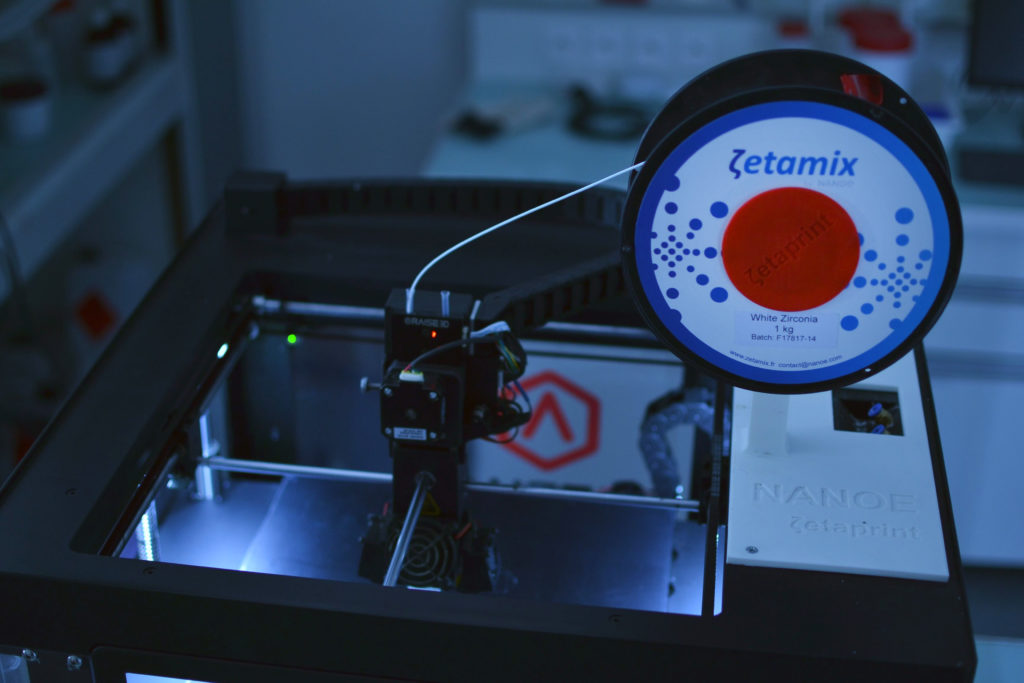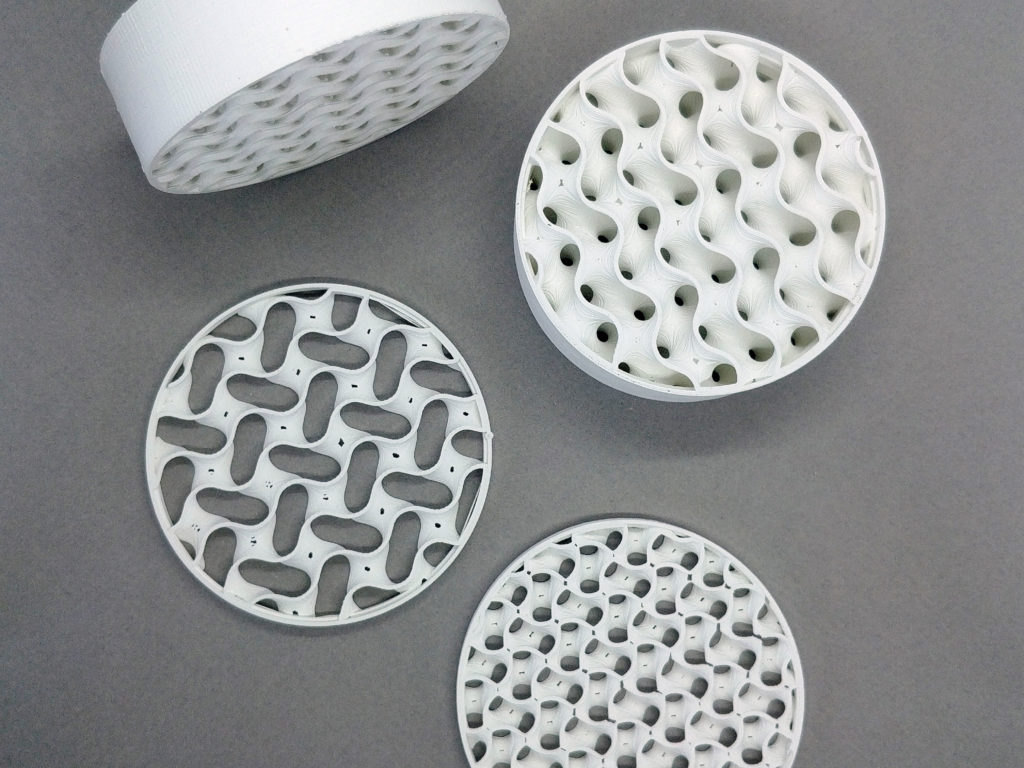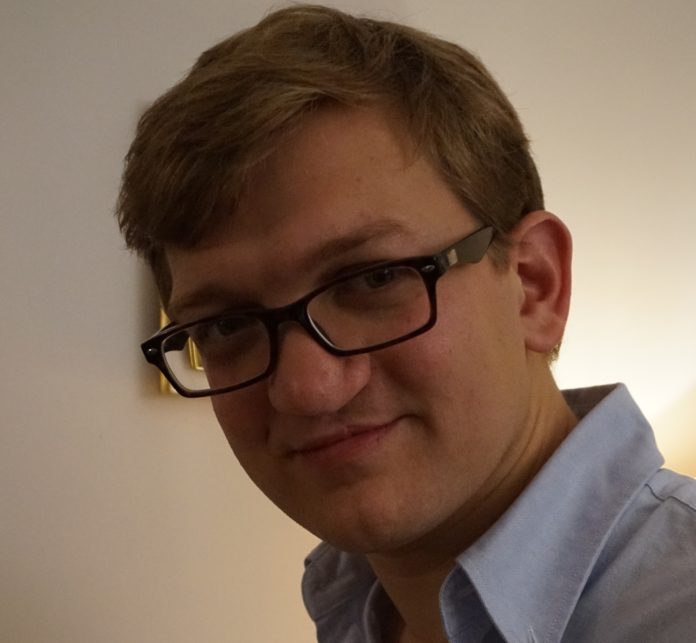Twelve years ago, nobody could have told Nanoe would have been one of the rare companies shaping the ceramic additive manufacturing market.
The ceramics industry represents an annual production value of around €30 billion, which is approximately 25% of the global production. A report from SmarTech Analysis on the ceramics AM market foresees that AM of technical ceramics would grow into a $3.1 billion overall market segment by 2030; this growth including hardware, materials and associated part revenues.
Despite these positive outlooks, there is still a very few number of companies that specialize in this segment. We recently sat down with Guillaume de Calan to understand the state of mind of those who are giving this technology a try.
Guillaume de Calan is the CEO and one of the founders of Nanoe. He has recently been appointed as President of CTTC, Centre de Transfert de Technologies Céramiques, a key player in the French ceramics landscape that drives the transfer of new technologies to the industry.
De Calan’s company, Nanoe, produces raw materials and provides high technical ceramics for demanding industries. The company’s primary market was injection-moulding. Three years ago, following their customers’ demand for AM-dedicated technical ceramics, Nanoe started diversifying its portfolio of products and services with other raw materials. Today, in the AM industry, it provides filaments for FDM Ceramic 3D printing, and other materials to all AM technologies including binder jetting.
“We focus by essence on ceramics but we have the feeling that all these AM technologies are complimentary”, the CEO said from the outset. Speaking of their entrance into the ceramics AM market, he continues:
“It all started with our customers’ enquiries. Some of our customers asked us if we could provide materials for the AM industry. As a raw materials supplier, we wanted to broaden the adoption of ceramic to this market by bringing a technology that could be leveraged by most users. Our aim was to develop and provide an affordable technology. That’s why we started with FDM, a tech that is accessible to all and which is relatively easy to understand”.
This demand from Nanoe’s customers does not necessarily imply that it is also the case for all companies that specialize in this market. Reality shows that the advancement of the ceramics AM market depends on its adoption by various players including manufacturers, service providers and end users. If this process is one way to make ceramics AM a legitimate technology, De Calan also sheds light on two other reasons that could explain this slow adoption:
“From a technical perspective, operators can encounter some challenges in printing ceramics. This means that, when you explore this technological road, you have fewer options with ceramics than with metals. It’s very hard and complex to process ceramics if you are not an expert. You have to go through indirect methods where 3D printing is used to shape the ceramic part, which then needs to go through debinding and sintering.
Furthermore, it should be noted that industries are very careful before switching to another technology. Not to mention that if we look at it the other way, we will realize that what happened with metal will happen to ceramics. Once there is a market, technology follows. There are not currently a lot of applications with ceramics AM and we need more applications to foster the adoption of this technology. It takes time but I am very confident.”
Focus on Nanoe’s AM materials
Nanoe rapidly marked its beginning in the AM sphere with the launch of its materials. As the expert explained above, one of their goals was to provide a range of materials that would be easily accessible and affordable for all. As FDM is still the most widely used AM technology on the market, Nanoe has developed its line of Zetamix filaments.

“Zetamix is the first line of ceramic filaments. They are mainly composed of ceramics and polymer binder in a minority. Such composition gives the filament a certain flexibility. The filaments are very easy to use and to integrate, features that make it easier for companies to delve in AM ceramics”, Nanoe’s founder states.
As post-processing has become a key stage of each manufacturing process, the founder continues:
“A lot of people are developing indirect processes for ceramic and metals. At Nanoe, we are printing a mix of ceramics and binder. Therefore, when the part is produced, you need to remove the binder and dissolve it through debinding, then sinter the part in a furnace before getting a dense and solid ceramic part”.

Today, Nanoe provides a complete portfolio of products that enable businesses to leverage these materials and other technologies. For SLA for instance, De Calan confirms that they provide raw materials and formulated resins based on our customers’ projects.
The more we learn about ceramics AM, the more we realize that this technology can enable several applications that other AM technologies enable. This includes prototyping, tooling applications, parts that can withstand extreme temperatures as well as the production of complex parts in aerospace, medical and the semiconductors industry. In a nutshell, “every application where you traditionally already use ceramics. It requires a very long qualification time to get to final applications, so for the moment users mostly use it for tooling purpose” as per Guillaume De Calan’s words.
What’s next for Nanoe?
Nanoe is one of those agile players that enables much of the growth within this niche segment. The company has changed this traditional vision according to which ceramic AM necessarily goes hand in hand with slurries or powders by bringing filaments into the market. This road has not only enabled many users to explore ceramic AM in an affordable way, it has demonstrated Nanoe’s ability to focus on the customer and explore with him future possibilities.
Speaking of what the future holds for the company, De Calan concludes: “we’ve been focusing a lot on product development for the few years. Right now, we are going abroad, and we are building our reseller networks. We want to have a footprint in regions where we are not yet present, in particular the US and Asia, which are currently our top markets in terms of priority.
As far as materials are concerned, a range of materials is currently under development. Hopefully, we will release some of them by the end of this year.”
Remember, you can post AM job opportunities for free on 3D ADEPT Media or look for a job via our job board. Make sure to follow us on our social networks and subscribe to our weekly newsletter: Facebook, Twitter, LinkedIn & Instagram! If you want to be featured in the next issue of our digital magazine or if you hear a story that needs to be heard, make sure to send it to contact@3dadept.com






